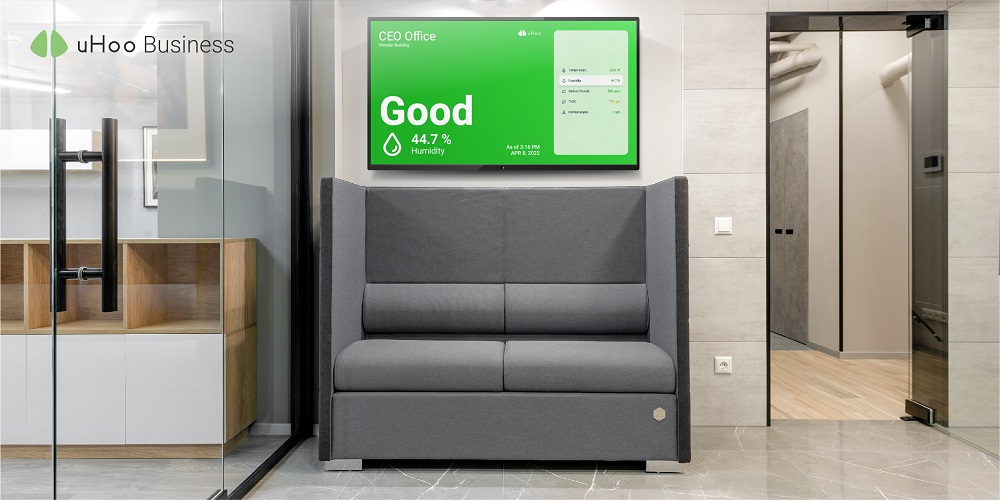
Yearly, about 3.8 million people succumb to diseases linked to indoor air pollution. This serious number of fatalities is greatly significant in a world that’s still coping from the negative impacts of the coronavirus pandemic, where most business operations ceased and almost all people were forced to stay indoors.
But now that the COVID-19 restrictions are slowly being lifted, companies, schools, hotels, and other organizations are putting their focus on creating workspaces and built establishments fit for the new normal. Some organizations implemented stricter social distancing, vaccination and mask wearing policies, while others performed office redesign and renovations.
But of all the countermeasures applied, are businesses and other organizations putting importance on indoor air quality?
Aside from preventing the negative effects of indoor pollution on health, indoor air quality (IAQ) plays an important role in minimizing the risk of virus infection and in improving people’s performance at work.
Awareness about the right to healthy air quality and environmental conditions remain very little, due to the lack of timely and reliable information. This is one of the main reasons why sharing indoor air quality data is crucial and necessary.
Importance of sharing indoor air quality data
Real-time indoor air quality data is essential to retain and regain customer trust. Customers, clients, and students are more likely to enter establishments that are guaranteed safe. Making IAQ data public or providing people the access to view the data empowers them to make informed choices about the buildings they enter, thus, increasing their readiness to return to indoor environments.
IAQ data also drives business prosperity. Millennials’ concerns about indoor air puts IAQ as an important factor that will boost employee engagement, leasing, and hotel bookings in the coming years, according to the The Impact of Indoor Air Quality on Millennials’ Return to Work and Travel survey conducted by Carbon Lighthouse in May 2021. The survey found that 75% of respondents, who are millennials, would consider indoor air quality at work and 66% of them are concerned about IAQ in hotels. IAQ will also be a factor in their booking decisions with 73% of them saying they would consider IAQ when booking a stay. Additionally, 88% of millennials say they would use a mobile app that provides real-time IAQ information
The results make it clear that promoting healthy indoor air quality is essential to encourage the public back indoors.
With IAQ enhancements and data sharing being prioritized, travelers will be more confident to book hotels, employees will be more at ease to go back to their workplaces, and people will be more comfortable going inside mall and retail stores, resulting in an improved business performance and economic growth.
What indoor air quality data reveal
- Actual concentrations and levels of air pollutants
- Building areas where air pollutants are active and high
- Ways and strategies that building owners and occupants can perform to minimize issues
Things to consider before sharing indoor air quality data
- Who should the access to the IAQ data
- Ways to effectively share the data
- What type of information should be shared
- The availability of tools, technologies, and guidelines for data sharing
- The challenges that could be present before, during, and after data sharing
- Rules and conditions for people who wants to have the access to the IAQ data
Share real-time and accurate indoor air quality data with uHoo Aura
uHoo Aura, the most comprehensive indoor quality monitoring device measures 13 to 15 factors affecting indoor air quality, namely temperature, humidity, air pressure, carbon dioxide, carbon monoxide, particulate matter (PM1, PM2.5, PM4, and PM10), Total Volatile Organic Compounds, formaldehyde, light, sound, and more.
All the real-time data, trends, and analytics can be viewed and managed using the uHoo Business dashboard, accessible via a computer and a mobile app.
Building managers and business leaders have the option to share their facility’s indoor air quality conditions via large screens installed within the building or publish it on their company website which people can freely access. This provides tenants, customers, and employees with peace of mind knowing that the building they’re in puts emphasis on their health and wellbeing.
When sharing indoor air quality data, it is important to remember data transparency is not enough to make a big difference. Business leaders,employees, and occupants must work together in devising strategies to improve indoor air quality based on the collected IAQ information.
- www.deakin.edu.au
- Facilityexecutive.com
- https://hospitalitytech.com/
- Hbr.org
- www.wired.com
- Ourworldindata.org
- www.clarity.io
- www.microshare.io
- Smartsensordevices.com


